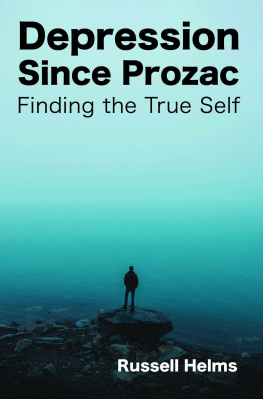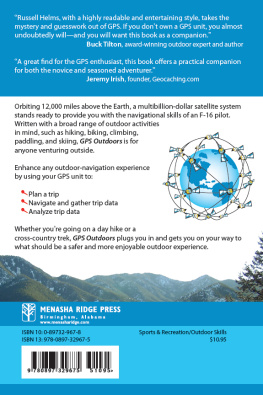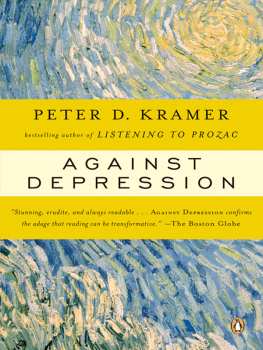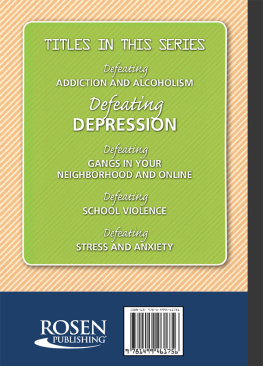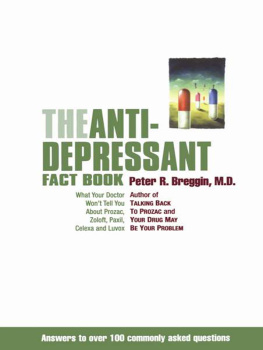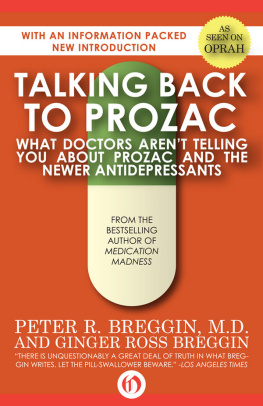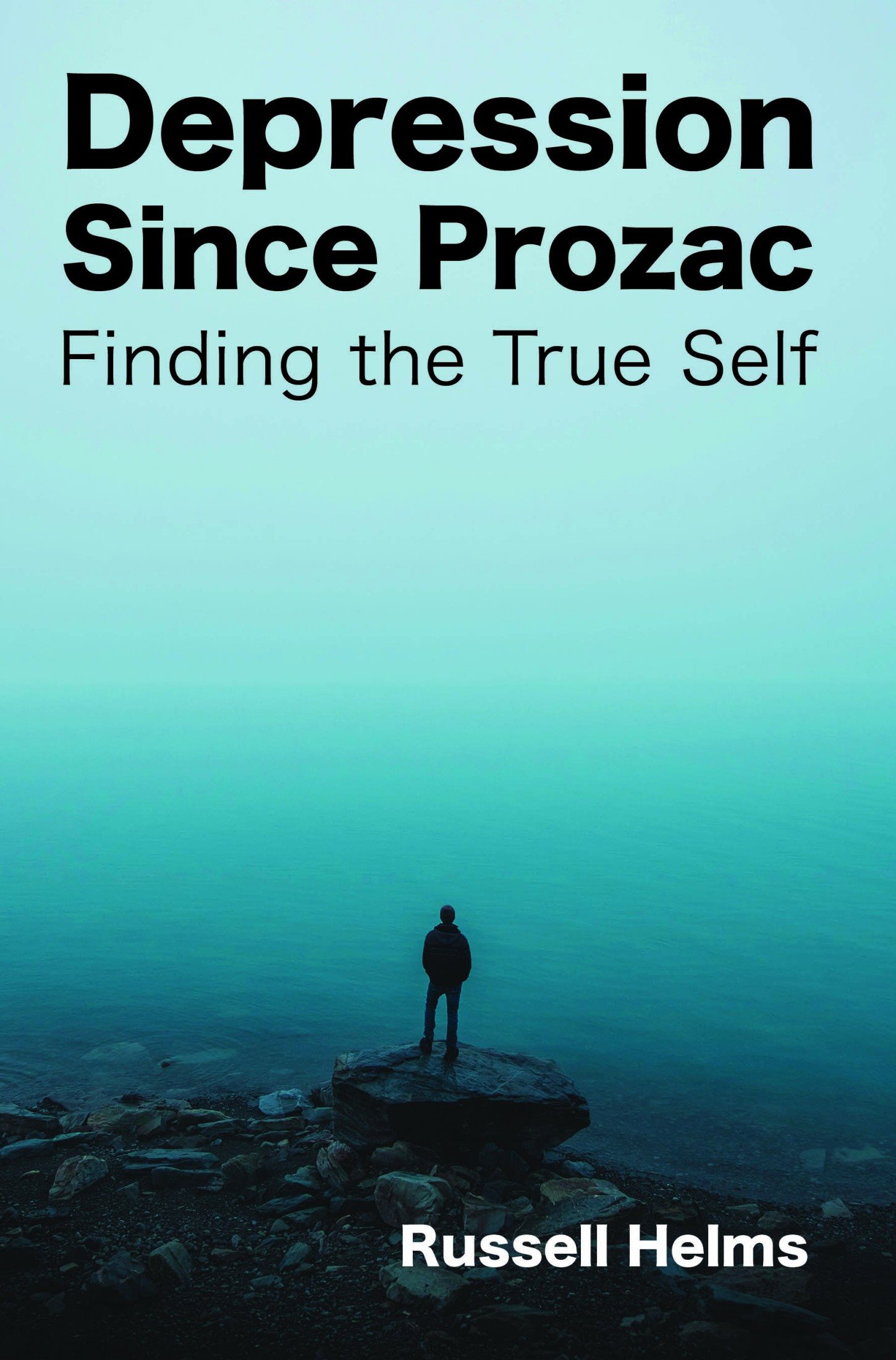Depression Since Prozac
Finding the True Self
for Clara and Jennings
Depression Since Prozac
Finding the True Self
Russell Helms

copyright 2019, Russell Helms
sij books
PO BOX 4945
Chattanooga, TN 37405
sijbooks.com
Please inquire for rights to duplicate material in this book.
Printed in the Unites States of America
First edition
ISBN: 978-1-943661-46-6
Cover photo by Yoal Desurmont
Prozac: An Argument for Authenticity
Does taking Prozac winnow away that sadness that is so dear to life, so essential some say, rendering one inauthentic? Are we to maintain the true self at all costs, foregoing treatment in an effort to avoid falsity? Could the medicated self actually be the true self? Ultimately, depression is nasty. Depression kills and any assuaging of its despair is not to be taken lightly, regardless of worries over authenticity.
Depression, whether mild, moderate, or severe is a crippling disorder. According to the World Health Organization (WHO) more that 300 million people worldwide suffer from depression, and depression is the leading global cause of disability [1]. Generally, more women than men are affected, whites have higher rates of depression than blacks and Hispanics, and the poor are more depressed than the rich [2]. According to the Centers for Disease Control and Prevention (CDC), depression is associated with an increased risk of suicide, lower workplace productivity, other mental disorders such as anxiety, and even smoking [3].
The problem of depression is widespread. In 2015, an estimated 16.1 million United States adults 18 and older experienced at least one major depressive episode in the past year, representing 6.7 percent of all adults [4]. Looking at this in terms of happiness, according to the Pew Research Center, a third of adults in the United States say theyre very happy, another half say they are pretty happy and the rest consider themselves not too happy [2]. For casual purposes, we can identify unhappiness as a condition of life and depression as an illness, although the two bleed into one another.
Happiness on a global scale has been measured by Helliwell et al. using the World Happiness Report [5]. The United States ranks number thirteen, with Norway ranking highest in happiness, although the difference between the two is not statistically significant. Its interesting to note that eight of the bottom ten countries, the unhappiest of all, are in Africa. Faced with civil wars, famine, drought, pestilence, and disease, its not hard to imagine being unhappy under such circumstances. Its estimated that 500,000 to 1 million people died in the Ethiopian famine of 1983 to 1986. In 1988, researchers in Ethiopia found that women in Addis Ababa, 94 out of a sample of 113, were suffering from what the women described as oppression of the soul, something equivalent to chronic depression [6].
In terms of cost in the United States, the burden of depression, including workplace costs, direct costs, and suicide-related costs, was estimated to be $210.5 billion in 2010 [3]. Medications like Prozac are, of course, a substantial portion of this disease cost. According to Nassir Ghaemi, psychiatric medicine costs are only bested by cardiology drugs, which are used to treat the number one cause of mortality, heart disease [7].
Suicide
A touchstone of depression is suicide, the tragic consequence of a treatable diseases ultimate finality. Heart disease and cancer consistently rank as the number one and number two contributors to mortality. And also consistently, suicide comes in tenth place, which is hard to fathom. Even more alarming, suicide is the second leading cause of death among those aged 1524 years, the second among persons aged 25-34 years, and the fourth among persons aged 3554 [8]. In 2016, the CDC reported that more than 40,000 people died by suicide, more than 1 million people reported making a suicide attempt in the past year, and more than 2 million adults reported thinking about suicide in the past year [9]. Worldwide, it is estimated that 800,000 people per year takes their lives [10]. To illuminate that statistic, worldwide every 40 seconds someone commits suicide and many more attempt suicide [10].
And, suicide rates have continued to climb. According to the WHO, suicide deaths increased from 11.5 per 100,000 people in 1970 to 11.8 per 100,000 in 1980. By 1990, four years after the introduction of Prozac, the U.S. suicide death rate actually increased [11]. The CDC reports that from 1999 through 2014, the suicide rate in the United States increased 24 percent [12]. For the latest year available, 2015, 44,000 people in the United States died from suicide, which does not include accidental deaths that may have been masked suicides [13].
Its commonly thought that suicidal thoughts should improve as the depression improves, but there have been claims that medications such as Prozac actually increase suicidal thoughts [14]. One explanation is that the seriously depressed are too weak to carry out a plan of suicide and once under treatment, but not fully controlled, the energy to carry out a suicide becomes possible. Its thus very important for depressed patients undergoing new treatment to be closely monitored and made aware of such a possibility. A black box warning issued in 2004 by the Food and Drug Administration, disclosed the possibility of suicidal ideation. The warning stated that there was an increased risk of suicide in children and adolescents treated with medications like Prozac. In 2006, the warning was extended to young adults [15]. As a result, as reported by NBC News, many of those taking Prozac and similar antidepressants, including children with worried parents, quit the medications, leaving them untreated and vulnerable, possibly leading to the increase in suicides [16].
Getting Diagnosed
To be properly diagnosed with depression, or major depressive disorder, according to the American Psychiatric Association (APA), a person must experience five or more symptoms from the list below for a continuous period of at least two weeks:
- Feelings of sadness, hopelessness, depressed mood
- Loss of interest or pleasure in activities that used to be enjoyable
- Change in weight or appetite (either increase or decrease)
- Change in activity: psychomotor agitation (being more active than usual) or psychomotor retardation (being less active than usual)
- Insomnia (difficulty sleeping) or sleeping too much
- Feeling tired or not having any energy
- Feelings of guilt or worthlessness
- Difficulties concentrating and paying attention
- Thoughts of death or suicide.
The CDC notes that symptoms should be present every day or nearly every day and should lead to significant distress [3]. In the twentieth century, diagnosing depression moved from a pseudo-science based on psychoanalysis to this research-based list of criteria now contained in the Diagnostic and Statistical Manual of Mental Disorders, which is now in its fifth edition.
Prozac to the Rescue
Released in December of 1987 was Eli Lillys Prozac, a drug designed to increase the amount of serotonin in the brain. An SSRI, or selective serotonin reuptake inhibitor, Prozac blocks the reabsorption of serotonin within brain synapses once it has been released as a signaling agent. The name Prozac was created by Interbrand, a leading global branding company. The name has been key in its success, indicating qualities of positive, professional, quick, proey, zaccy [17]. After testing Prozac for a variety of disorders, it was found to work with mild depression and was soon giving Eli Lilly, Prozacs maker, more than 25 percent of its $10 billion annual revenue [17].

